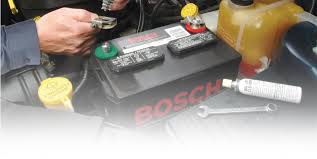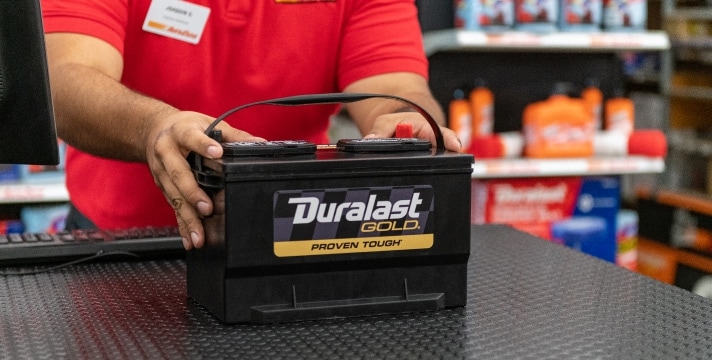Does a Bad Alternator Drain the Battery?

Your vehicle’s alternator plays a critical role in keeping the battery charged and powering electrical systems. However, a malfunctioning alternator can cause a variety of issues, including draining the battery. Understanding the relationship between the alternator and battery can help you identify and resolve the problem before it worsens.
What Is an Alternator?
1. Function of the Alternator
The alternator is responsible for converting mechanical energy from the engine into electrical energy. It powers your vehicle’s electrical components, such as the lights, radio, and air conditioning, while also charging the battery.
2. How It Works
The alternator is driven by a belt connected to the engine. It generates electricity as the engine runs, ensuring the battery maintains an optimal charge level.
Can a Bad Alternator Drain the Battery?
1. Yes, a Bad Alternator Can Drain the Battery
A faulty alternator may fail to recharge the battery while the engine is running, causing the battery to lose power. Over time, this can leave you with a dead battery.
2. How Does It Happen?
- Insufficient Charging: A failing alternator may not produce enough electricity to power the vehicle’s systems and charge the battery simultaneously.
- Parasitic Drain: If the alternator has an internal defect, such as a short circuit, it can continue to draw power from the battery even when the vehicle is turned off.
- Overcharging: A faulty voltage regulator in the alternator can cause it to overcharge the battery, leading to damage and a shortened battery lifespan.
Signs of a Bad Alternator
Recognizing the symptoms of a failing alternator can help you address the issue before it causes further problems:
1. Dim or Flickering Lights
Headlights and interior lights may appear dim or flicker due to inconsistent electrical output from the alternator.
2. Dead Battery
If your battery frequently dies, even after being replaced, the alternator may be the root cause.
3. Warning Light on Dashboard
Most vehicles have a dashboard warning light, usually shaped like a battery, that illuminates when there’s an issue with the charging system.
4. Slow Electrical Accessories
Power windows, locks, and other electrical components may operate slower than usual due to insufficient power.
5. Unusual Noises
A failing alternator can produce grinding or whining noises, often due to worn bearings or internal components.
How to Diagnose a Bad Alternator
1. Test the Battery Voltage
Use a multimeter to check the battery voltage. A fully charged battery should read about 12.6 volts when the engine is off and 13.7–14.7 volts when the engine is running.
2. Inspect the Alternator Belt
Ensure the alternator belt is tight and in good condition. A loose or worn belt can prevent the alternator from functioning properly.
3. Perform an Alternator Test
Many auto parts stores, such as AutoZone, offer free alternator testing. This test can confirm whether the alternator is functioning correctly.
Can You Drive with a Bad Alternator?
While it’s possible to drive with a failing alternator, it’s not advisable. A bad alternator will eventually drain the battery, leaving you stranded. Additionally, operating the vehicle without sufficient electrical power can cause other systems to fail.
How to Fix a Bad Alternator
1. Replace the Alternator
If the alternator is confirmed to be faulty, replacing it is the most effective solution. Costs for replacement typically range from $400 to $1,000, depending on the vehicle make and model.
2. Repair the Alternator
In some cases, specific components of the alternator, such as the voltage regulator, can be repaired or replaced instead of replacing the entire unit.
3. Inspect Related Components
Check the alternator belt, battery, and connections to ensure they are in good condition. Replacing a bad alternator without addressing related issues may lead to further problems.
Preventing Alternator-Related Battery Drain
1. Regular Maintenance
Schedule regular inspections of your vehicle’s charging system to catch issues early.
2. Monitor Battery Health
Keep an eye on your battery’s performance and replace it as needed to avoid strain on the alternator.
3. Address Warning Signs Promptly
Don’t ignore symptoms such as dim lights or a warning light on the dashboard. Early action can prevent more expensive repairs.
FAQs
1. How Long Does an Alternator Last?
Most alternators last between 80,000 and 150,000 miles, depending on the vehicle and driving conditions.
2. Can a Bad Battery Damage the Alternator?
Yes, a weak or failing battery can strain the alternator, potentially causing it to fail prematurely.
3. How Do I Know If It’s the Battery or Alternator?
If the vehicle starts after a jump but dies shortly after, the alternator may be the issue. If the vehicle doesn’t start at all, even with a jump, the battery may be the problem.
4. Can a Bad Alternator Cause Electrical Problems?
Yes, a failing alternator can cause inconsistent electrical output, leading to issues with lights, power windows, and other systems.
Conclusion
A bad alternator can indeed drain your car’s battery, leading to a variety of issues, including difficulty starting the vehicle and malfunctioning electrical systems. Recognizing the symptoms early and addressing them promptly can save you time, money, and frustration. Regular maintenance and testing of the charging system are key to preventing alternator-related problems. If you suspect your alternator is failing, consult a professional mechanic to diagnose and resolve the issue.
Also Check:
• How Do I Know If My Alternator Is Bad?
• Does the Alternator Charge the Battery?
• Does the Alternator Charge the Battery When the Car is Off?





